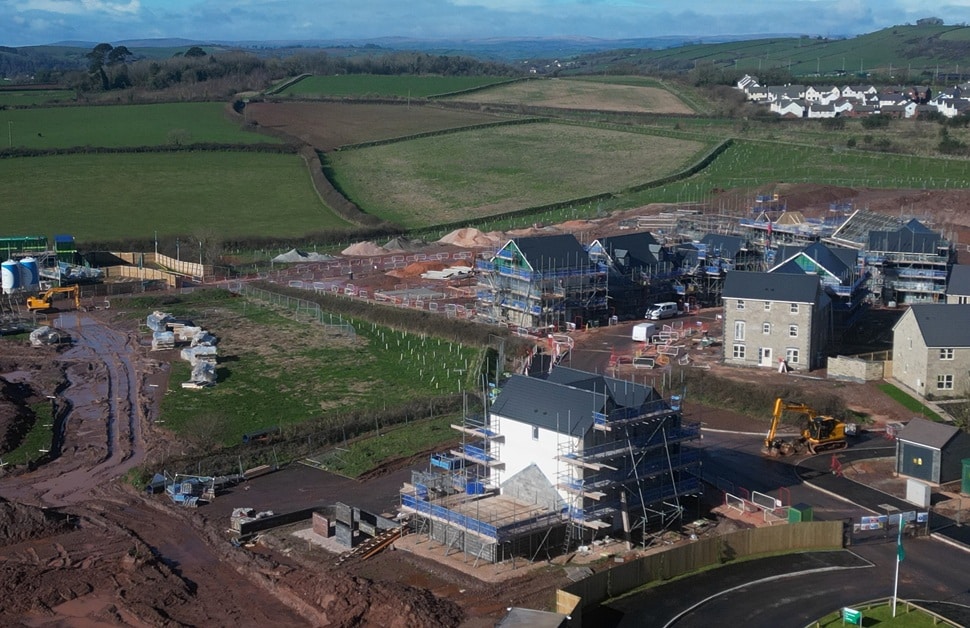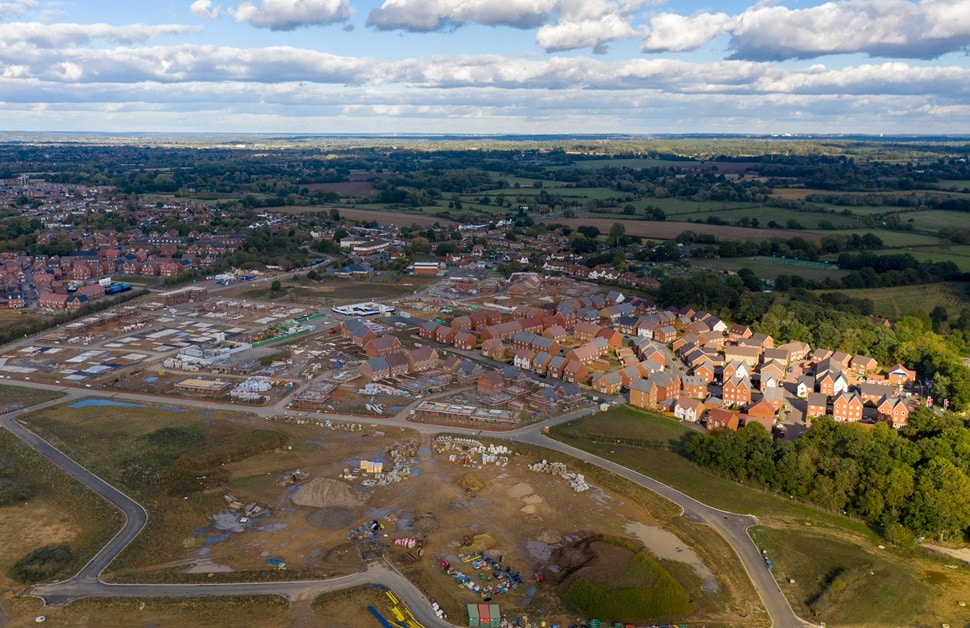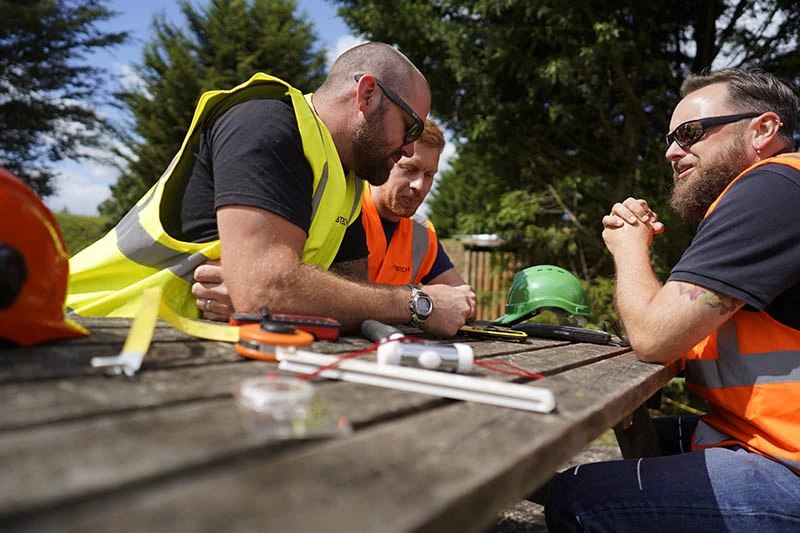
Developing Near Green Belt Land
Whenever developments are on or even just near green belt land, evidence needs to show that the scheme is acceptable in the eyes of the local authorities and does not conflict with relevant policies, national policy or the local context. In the National Planning Policy Framework (NPPF), planning projects within green belt land are seen as an ‘inappropriate development’, and due to that, developers need to make sure that they are approaching it correctly.
It can also apply to a development near green belt land, which won’t be seen as ‘inappropriate’ but will still be sensitive due to the close proximity to land protected by UK planning law. Suppose the plans have any chance of affecting the green belt. In that case, developers will need to think about the openness of the green belt, current boundaries, any contribution land makes to accessible green space, and concerns around restricting development and preventing urban sprawl or visual separation.
Planning within a green belt either needs what’s known as very special circumstances (VSC) or a type of landscape survey that specifically covers developments conducted within the green belt – possibly even both. The survey is known as a green belt impact assessment (GBIA), and it is something Arbtech can arrange by referring clients to a trusted partner.
What is a Green Belt Impact Assessment?
A green belt impact assessment (GBIA) is a survey and report that determines if a proposal is classed as an ‘inappropriate development’ within the NPPF and if it would fundamentally undermine the green belt policy. It also examines how the development could affect smaller assessment areas within the wider plan area, offering a more granular review of the site’s potential impact on the green belt.
A GBIA looks at how the development affects the site’s openness, purposes and policy function, and how it complies with the golden rules of corresponding policies, such as the appropriate scale and substantial weight on the green belt, as well as if there’s a strong reason or VSC to justify the proposal.
Another crucial element of a GBIA is that it works with the five relevant green belt purposes of assisting urban regeneration, keeping neighbouring towns separate, preserving the setting and special character of historic towns, preventing urban sprawl, and safeguarding the countryside from encroachment. If the purpose relates poorly to the development site – such as where it no longer helps to prevent urban sprawl or has limited contribution to landscape quality – that’s a relevant point that can support the argument for development.
If a development goes against or doesn’t support any of the five purposes above, the local planning authority is likely to be more restrictive when it comes to granting planning permission. For developments such as these and projects in or adjacent to green belt land, a GBIA will be pivotal in showing how the scheme will promote sustainable patterns of development and avoid undermining national or local green belt policy.
Comparison with a Green Belt Assessment
Although a green belt assessment has a similar name to a green belt impact assessment, the two surveys are extremely different.
While a green belt impact assessment is site-specific and looks at how a development would affect green belt land, a green belt assessment is a strategic review of green belt land for local planning authorities during the local plan-making process.
Grey Belt Land in a GBIA
Any previously developed, underutilised or degraded land within or on the edge of green belt land is called grey belt land. When it comes to identifying grey belt sites, examples could include abandoned brownfield sites, edge-of-settlement land surrounded by existing development, or low-quality open land with poor public access.
Grey belt land isn’t an official planning designation in the NPPF, but it still plays a potential part in green belt impact assessments. For instance, if you identify grey belt land on your site, the GBIA will argue that the land no longer provides openness or separation visually, prove that the land’s contribution to green belt purposes is weak, and support a case that the site is appropriate for development.
When Would Someone Need a Green Belt Impact Assessment?
The main reason for a green belt impact assessment would be to ensure that all of the needs of the local council are met if the development is on or near green belt land. While it may be preferable to avoid green belt land entirely, it isn’t always possible. For instance, a major housing development may need to extend into green belt areas due to a demonstrable unmet need or an obligation to meet housing targets within the plan area. In such cases, a GBIA ensures that development proposals are framed within local circumstances and national policy, and demonstrate that the site is the most suitable and sustainable location available.
Alternatively, a GBIA could be needed to promote land in commercial, residential or infrastructure development, offer evidence for reviewing green belt boundaries in a review, or strengthen an appeal case if it was refused due to concerns over green belt harm. With a GBIA, it will be possible to argue that the site is previously developed and therefore brownfield, in a sustainable location, contributes little to green belt purposes, or wouldn’t significantly affect openness or countryside character.
Uses for a GBIA
- Assess Small Assessment Areas in Larger Strategic Planning Reviews
- Create a Strong Reason Case in Support of a Planning Approval
- Green Belt Boundary Review
- Identification of Green Belt Land
- Maximise Sustainable Transport Solutions
- Minimise Impact on Openness and Visual Separation
- Planning Appeal After a Refusal
- Planning Application for a Development in the Green Belt
- Promotion of Land in Local Plans
- Strengthen Applications Where the Purpose Relates Weakly to the Current Land Use
Likely Clients
- Architects and Planning Consultancies in Need of Technical Input
- Housing and Infrastructure Providers Targeting Previously Developed Land
- Landowners and Strategic Land Promoters
- Private Developers Planning Large or Small-Scale Schemes
Green Belt Impact Assessment Methodology
In every green belt impact assessment, the team we refer to for landscape surveys follows the same general structure, only changing it based on the circumstances of the development site and the aims of the planning project.
Below, we’ve clearly set out how GBIAs are carried out, with reference to key elements, such as green belt land, grey belt land, green belt purposes, very special circumstances (VSCs) and national policy.
GBIA Process and Approach
1. Scoping and Policy Review
- Identifying relevant legislation and policies, particularly NPPF paragraphs 147-155, the local plan and regional guidelines
- Mapping existing green belt boundaries, remaining green belt land, and potential grey belt land
2. Site and Context Appraisal
- Attending the site in person to better understand the site’s location, context, landscape character and visual separation
3. Openness and Purposes Assessment
- Evaluating spatial and visual openness of the green belt and contributions to each of the five purposes
4. Impact Analysis
- Examining potential impact, including visual, massing and scale, and whether the development would contribute strongly or negatively to the wider green belt function
5. Mitigation and VSC Justification
- Recommending well-designed layouts, landscape screening and transport links
- Supporting the case for VSC, emphasising unmet demonstrable needs, previously developed land or sustainable patterns
6. Reporting and Submission
- Issuing a polished report summarising the key steps and concluding whether the proposal can automatically follow approval
- Including a clear NPPF read, with references to the latest policies and planning guidance
- Supporting development proposals through appeals if needed
Connected Reports and Surveys

Get a GBIA Quote for Your Development
If your project is in or near the green belt, a GBIA not only acts as a technical exercise but also as a strong reason for the council to engage with your proposal seriously. Whether you’re looking to meet housing demand, promote land for development or navigate planning restrictions, we can help you move forward with confidence by forwarding you on to a trusted sister company.
Get us involved in your development in the first instance and take account of the overlap with green belt land by speaking to our team today and asking about booking a green belt impact assessment through Arbtech. You can call, email or complete a booking form online to contact our team. With the information you give us, we can send the information on to our landscape survey partner to create a free quote for a GBIA on your site.


